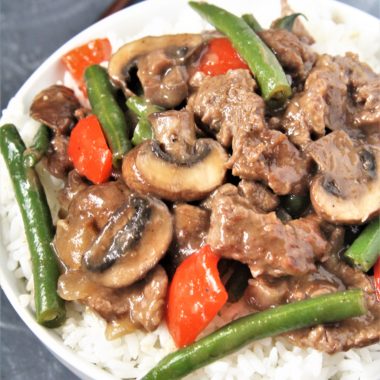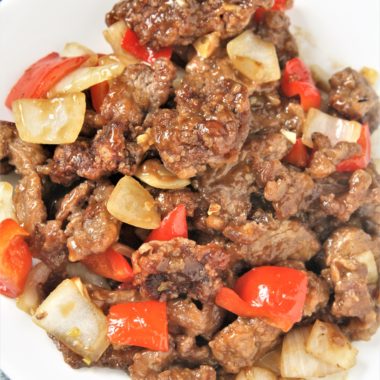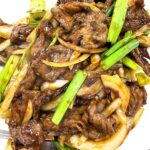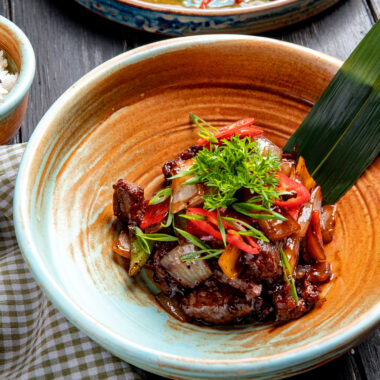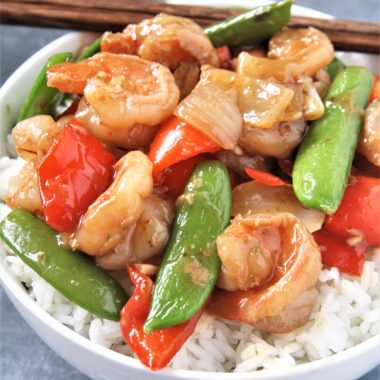Last Updated on February 9, 2025 by Karen
Learn about unique flavor profiles, origins, and key ingredients of Hunan Beef and Mongolian Beef, and how to make Hunan Beef recipe with soy sauce, chili paste, hoisin sauce, and more!
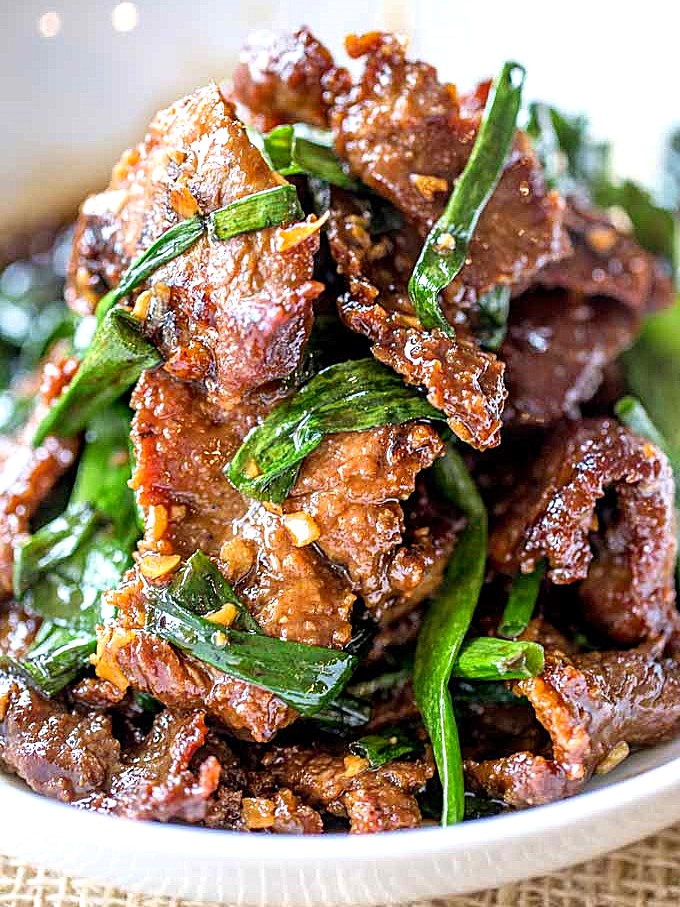
Chinese cuisine is one of the most diverse and flavorful culinary traditions in the world. With its rich history, regional influences, and emphasis on fresh, bold ingredients, it has captured the taste buds of millions globally. Among the many beloved Chinese dishes, two stand out for their delicious and distinctive flavors—Hunan Beef and Mongolian Beef. While both dishes feature tender slices of beef, they come from different regions of China and offer contrasting flavor profiles that appeal to different palates.
Hunan Beef, with its signature spicy, bold heat, hails from the Hunan province of China, where liberal use of chili peppers and vibrant, savory sauces are a way of life. On the other hand, Mongolian Beef, despite its name, is more closely associated with Chinese-American cuisine and boasts a milder, sweeter taste that balances savory flavors with just a hint of heat.
Whether you’re a spice lover or prefer something milder, these two dishes offer unique experiences that have made them favorites in Chinese restaurants worldwide. But what exactly sets them apart? Let’s take a closer look at each dish, its origin, how it’s made, and, of course, the main differences between them!
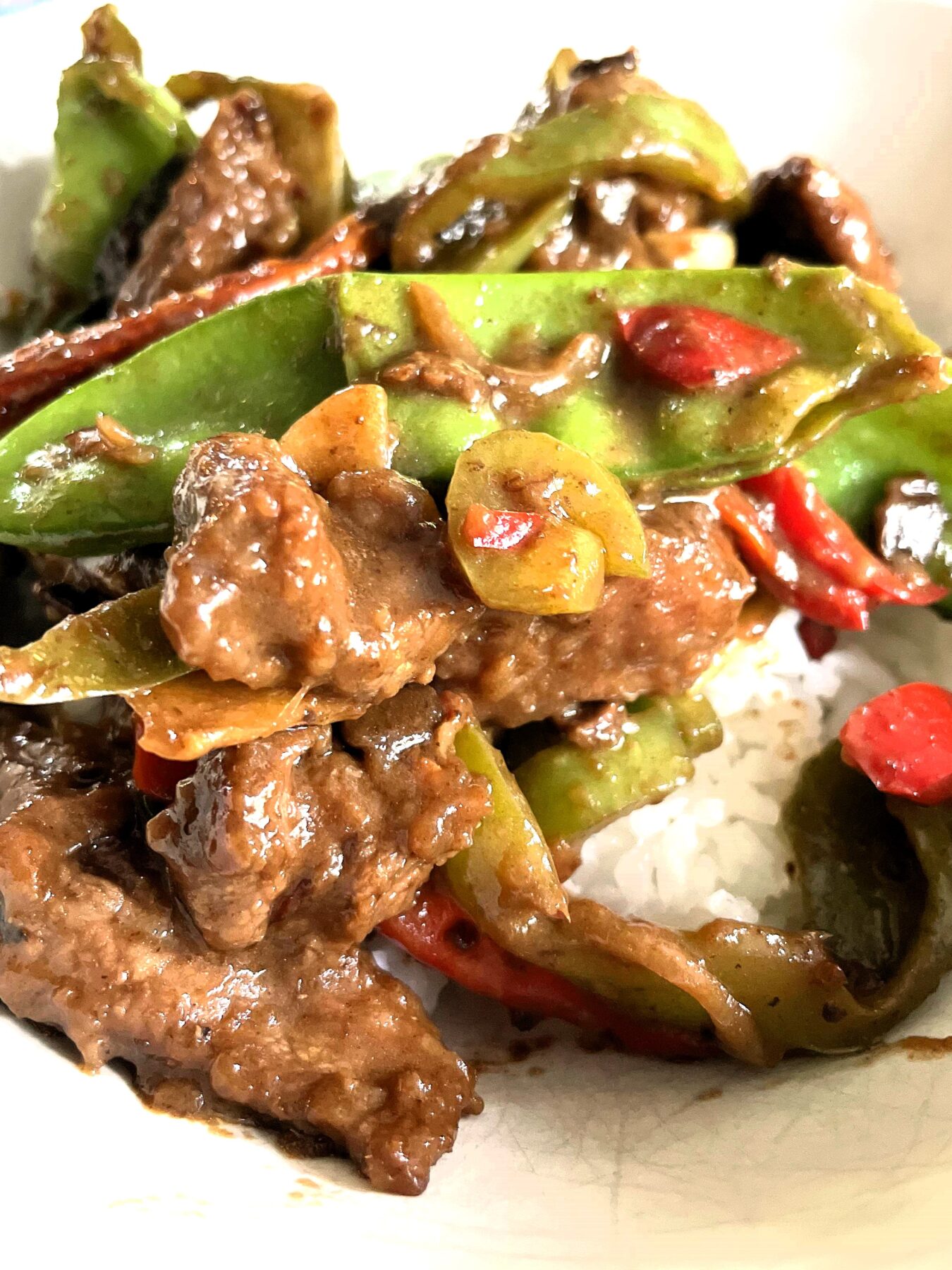
What is Hunan Beef?
Hunan Beef is a spicy stir-fry dish from Hunan province, located in southwestern China. It’s known for its bold, fiery flavors and liberal use of chili peppers, garlic, and fresh ingredients. Hunan Beef is often cooked with a flavorful sauce made from soy sauce, hoisin sauce, oyster sauce, and chili paste, with a generous helping of fresh vegetables like red bell peppers and green onions. The dish is commonly cooked with tender slices of beef (often flank steak) and served with white rice to help balance the heat. Hunan Beef is a favorite for those who enjoy bold, spicy flavors in their stir-fries.
How is Hunan Beef commonly served?
Hunan Beef is commonly served with steamed white rice or cauliflower rice. It is also often paired with stir-fried vegetables like bok choy, baby corn, and red bell peppers, which provide balance to the dish’s intense, spicy flavors. In Chinese restaurants, it’s typically seen as a favorite dish for those who love spicier Chinese food, thanks to its generous use of chili paste, black pepper, and red chili peppers.
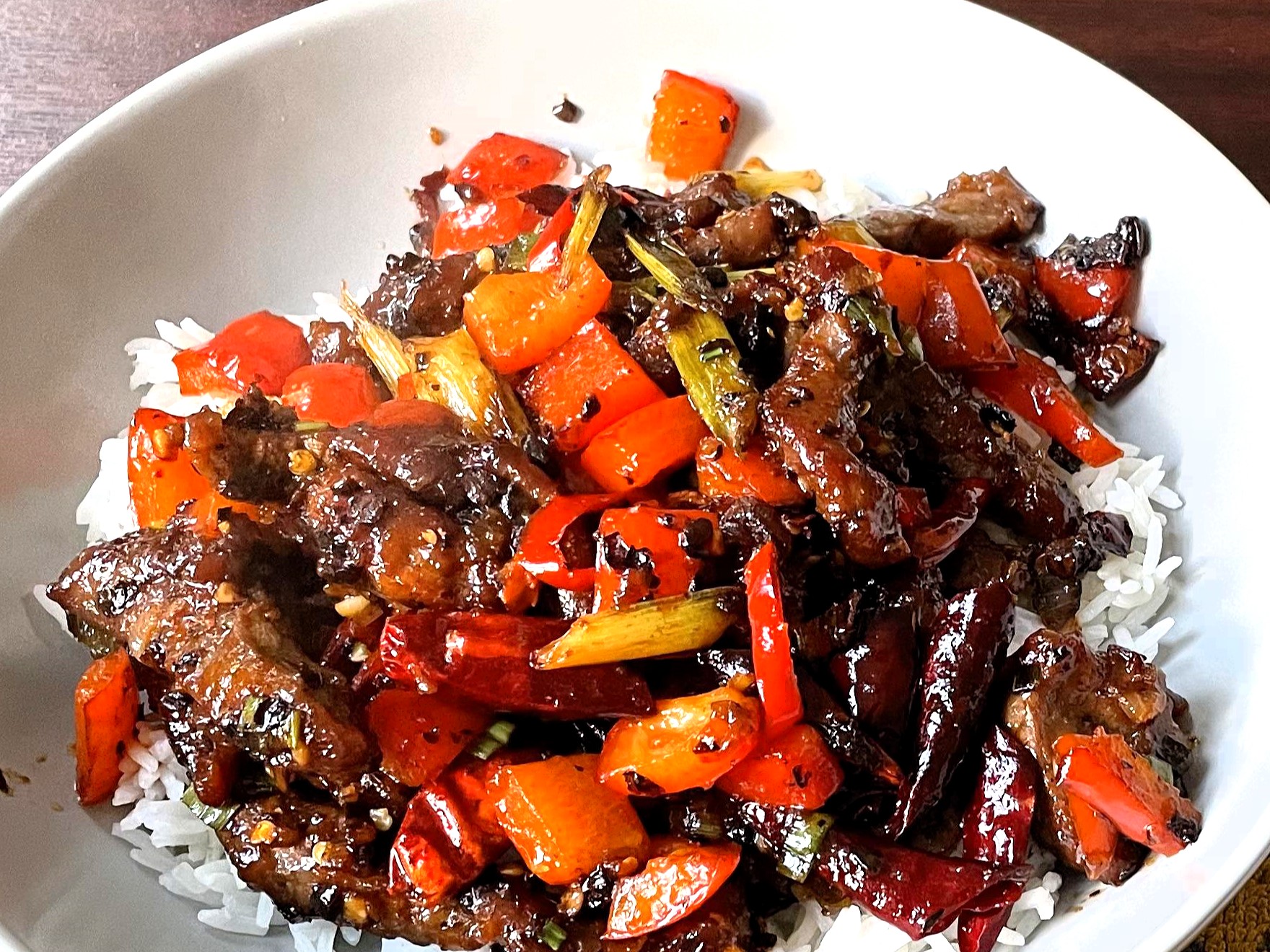
What is the origin of Hunan Beef?
Hunan Beef originates from Hunan province in southwestern China, known for its spicy cuisine. Hunan cooking features the use of chili peppers, garlic, and ginger to create bold flavors with a medium to high spice level. The region’s cuisine is also influenced by the local river systems, such as the Xiang River, which is a key feature of Hunan cuisine. The liberal use of chili peppers and distinctive spicy sauces like Hunan sauce helps define this region’s style of cooking. Hunan Beef, like many other dishes from this region, is designed to deliver a spicy, flavorful experience with a mix of savory, sweet, and sour tastes.
How do you make Hunan Beef?
To make Hunan Beef, thin slices of beef (usually flank steak or beef tenderloin) are marinated in soy sauce, cornstarch, sesame oil, and black pepper. The beef is stir-fried at medium-high heat in vegetable oil until tender and crispy. The sauce is made by combining hoisin sauce, oyster sauce, chili paste, and brown sugar to achieve the perfect balance of spicy, savory, and slightly sweet flavors. The dish is finished off with a mixture of fresh ingredients like green onions, red bell peppers, and sometimes water chestnuts, making for a colorful, vibrant stir-fry.
What is Mongolian Beef?
Mongolian Beef is a sweet and savory stir-fry dish that features tender beef slices cooked in a flavorful sauce made from soy sauce, brown sugar, and Worcestershire sauce. Despite its name, Mongolian Beef is not from Mongolia, but rather a creation popularized by Chinese-American cuisine, especially in Chinese restaurants. The dish tends to have a mild, sweet flavor with only a small hint of heat from chili paste or cayenne pepper, making it a great option for those who prefer something less spicy than Hunan Beef.
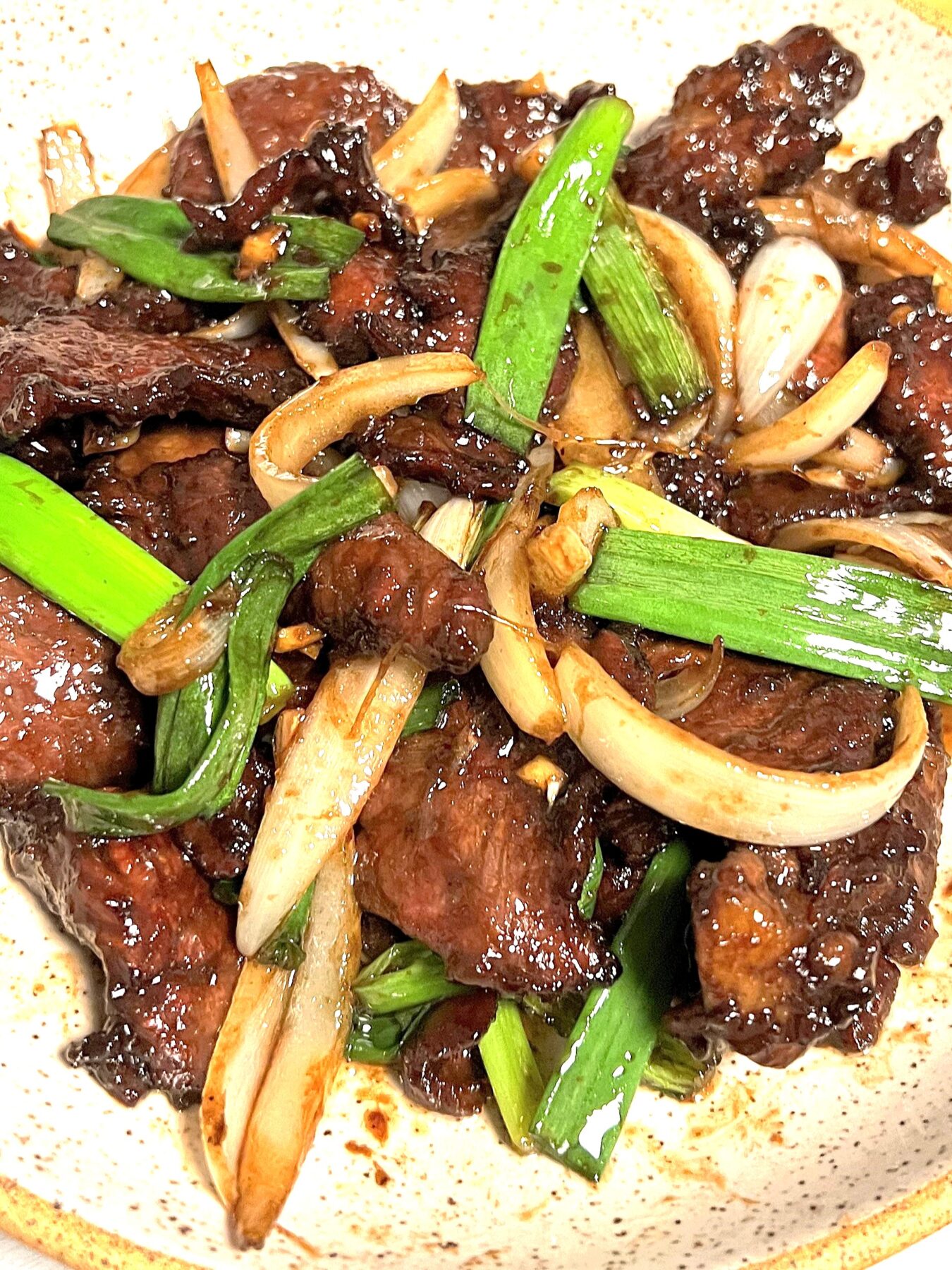
How is Mongolian Beef commonly served?
Mongolian Beef is often served with steamed white rice, cauliflower rice, or sautéed vegetables. It’s a popular dish in Chinese takeout, known for its balance of savory sweetness. Green onions are commonly used to garnish the dish, adding freshness and color. The sweet brown sauce, along with the tender beef, makes Mongolian Beef a perfect meal for those who prefer a dish that is both flavorful and not too spicy.
What is the origin of Mongolian Beef?
Mongolian Beef is a dish that was likely created in Chinese-American restaurants and is not directly linked to traditional Mongolian cuisine. While it may have been inspired by Mongolian cooking styles, such as the use of beef, the dish itself reflects more of a Chinese-American fusion, with a sweeter, milder profile compared to the bold, spicy dishes of China. Its popularity surged due to Chinese restaurants in North America, especially with the advent of chains like PF Chang’s.
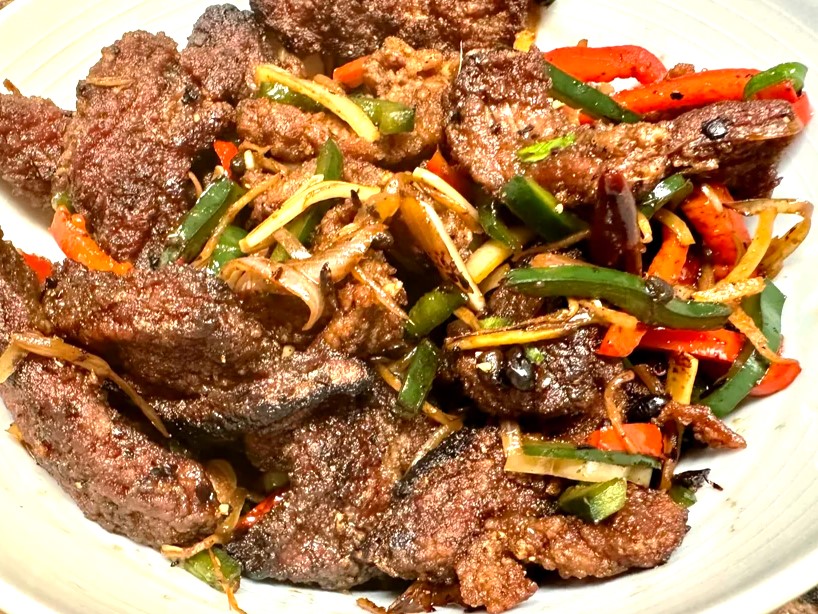
How do you make Mongolian Beef?
Mongolian Beef is made by marinating thin slices of beef (such as flank steak or beef tenderloin) in soy sauce and cornstarch. The beef is stir-fried in vegetable oil until tender and browned. The sauce is made by mixing soy sauce, brown sugar, and Worcestershire sauce to create a savory-sweet base. Garlic, ginger, and a hint of cayenne pepper add flavor. The dish is finished with green onions and served over steamed rice or with sautéed vegetables.
Main Difference Between Hunan Beef vs Mongolian Beef
Both Hunan Beef and Mongolian Beef are popular Chinese dishes, but they offer very different dining experiences. Let’s compare the two dishes across several categories:
Base Flavor Profile
- Hunan Beef: The flavor is bold and fiery, with a spicy sauce that’s packed with chili paste, soy sauce, hoisin sauce, and a touch of sweetness from brown sugar. The bold heat of the chili peppers defines this dish.
- Mongolian Beef: The flavor is much sweeter and milder, with a savory brown sauce made from soy sauce, brown sugar, and Worcestershire sauce. The heat level is far lower compared to Hunan Beef, making it a more approachable dish for those who don’t want too much spice.
Spice Level
- Hunan Beef: This dish is much spicier, with liberal use of chili paste, red chili peppers, and sometimes cayenne pepper. The heat is bold and noticeable, especially for those who enjoy spicy Chinese food.
- Mongolian Beef: Mongolian Beef has a much milder spice level, with only a slight kick of heat from cayenne pepper or red chili flakes.
Key Ingredients
- Hunan Beef: Key ingredients include soy sauce, oyster sauce, hoisin sauce, chili paste, red bell peppers, garlic, ginger, and Sichuan peppercorns. Fresh ingredients like green onions and bok choy are often included to balance the flavors.
- Mongolian Beef: The main ingredients are soy sauce, brown sugar, Worcestershire sauce, garlic, ginger, and beef slices. The sauce is sweet and savory, with minimal spice compared to Hunan Beef.
Cooking Methods
- Hunan Beef: The beef is stir-fried at high heat with chili paste, fresh vegetables, and a savory-sweet sauce. The dish is cooked quickly to retain the tenderness of the beef.
- Mongolian Beef: Mongolian Beef is also stir-fried at high heat, but the focus is on creating a glossy, sweet sauce that coats the beef without intense spiciness.
Cultural Context
- Hunan Beef: This dish comes from Hunan province, known for its bold, spicy cuisine. Hunan-style cooking incorporates liberal use of chili peppers and fresh ingredients to create complex and fiery flavors.
- Mongolian Beef: Despite its name, Mongolian Beef is a Chinese-American creation and is more focused on sweetness and mild heat. It doesn’t reflect the traditional Mongolian culinary style, which typically uses beef, lamb, and minimal seasoning.
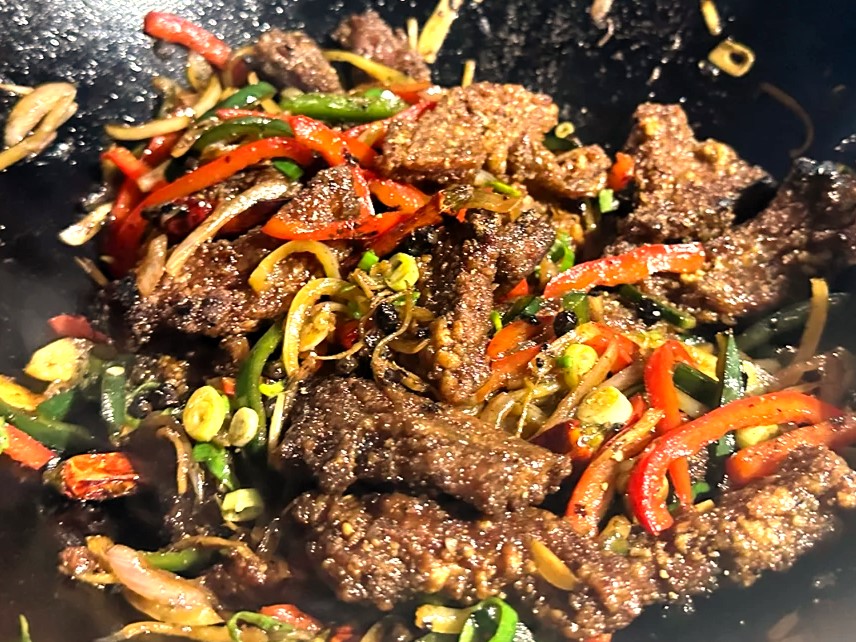 Learn about unique flavor profiles, origins, and key ingredients of Hunan Beef and Mongolian Beef, and how to make Hunan Beef recipe with soy sauce, chili paste, hoisin sauce, and more!
Learn about unique flavor profiles, origins, and key ingredients of Hunan Beef and Mongolian Beef, and how to make Hunan Beef recipe with soy sauce, chili paste, hoisin sauce, and more!
Hunan Beef vs Mongolian Beef: Which Is the Better Dish?
It all depends on your personal preference! If you love bold, spicy, and savory flavors with a tingling sensation, Hunan Beef will give you a thrilling experience. On the other hand, if you prefer a milder, sweeter, and more balanced dish, Mongolian Beef is the perfect choice. Both dishes are delicious in their own right, and you can enjoy them based on your spice tolerance and flavor preferences.
If you’re looking for a more intense, spicy flavor, go with Hunan Beef. But if you’re in the mood for something sweeter and milder, Mongolian Beef is the dish for you!
Easy Hunan Beef recipe
Ingredients:
- For the Beef:
- 1 lb (450g) flank steak, thinly sliced against the grain
- 2 tbsp soy sauce
- 1 tbsp cornstarch
- 1 tsp sesame oil
- 1/2 tsp black pepper
- 1 tbsp vegetable oil (for frying)
- For the Sauce:
- 2 tbsp soy sauce
- 1 tbsp hoisin sauce
- 2 tbsp oyster sauce
- 1 tbsp chili paste (adjust to taste)
- 1 tbsp brown sugar
- 2 tbsp rice vinegar
- 1 tbsp cornstarch mixed with 2 tbsp water (cornstarch slurry)
- 1/2 cup beef broth or water
- 2 garlic cloves, minced
- 1-inch piece of ginger, minced
- 1 tbsp vegetable oil (for sauce)
- For Garnish:
- Green onions, chopped
- Red bell peppers, sliced
- Szechuan peppercorns (optional, for extra spice)
- Red chili peppers or red pepper flakes (optional, for extra heat)
- White rice or cauliflower rice (for serving)
Instructions:
- In a bowl, combine the thinly sliced flank steak, soy sauce, cornstarch, sesame oil, and black pepper. Toss until the beef is evenly coated, then let it marinate for 15-20 minutes.
- In a separate bowl, whisk together the soy sauce, hoisin sauce, oyster sauce, chili paste, brown sugar, rice vinegar, cornstarch slurry, and beef broth or water. Set aside.
- Heat 1 tbsp vegetable oil in a large skillet or wok over medium-high heat. Add the marinated beef in a single layer and sear until browned and crispy, about 2-3 minutes per side.
- In the same skillet, add the garlic, ginger, and red bell peppers. Stir-fry for about 30 seconds, then add the sauce mixture. Let it simmer for 2-3 minutes until the sauce thickens and the beef is fully coated.
- For an added kick, toss in some Szechuan peppercorns and red chili peppers, according to your spice preference.
- Garnish with green onions and serve over white rice or cauliflower rice for a healthier option.
This easy Hunan Beef recipe brings the bold, fiery flavors of Hunan province directly to your home. Enjoy the savory, spicy sauce paired with tender beef slices and colorful veggies!

